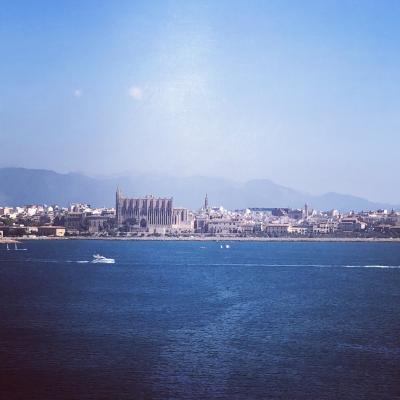How does the Via d’Alemanya serve as a reflection of Palma’s evolving identity as a city?
Similar Topics
via d’alemanya
palma mallorca
historical roots
urban development
medieval german community
architectural blend
cultural diversity
modern urban life
The Via d’Alemanya is a significant thoroughfare in Palma, Mallorca, that beautifully encapsulates the city’s evolving identity by blending its rich historical roots with contemporary urban development. Once a route closely associated with Palma's medieval German trading community, a nod to its name which means "German Way" in Catalan, it has transformed into a vital artery linking the old town to newer areas of the city. This street reflects Palma’s gradual expansion beyond its historic core, symbolizing a city that honors its past while embracing modernization. The architecture along Via d’Alemanya offers a visual narrative, where traditional stone buildings stand alongside modern structures, capturing Palma’s dynamic urban evolution.
Moreover, the Via d’Alemanya serves as a microcosm of Palma’s cultural and social diversity. It forms part of a route that leads visitors and locals from the historic center toward the seafront and the bustling Port of Palma, showcasing how the city balances its identity as both a historic Mediterranean town and a vibrant contemporary hub. Local businesses, cafes, and galleries represent Palma’s thriving creative scene, while the street itself remains a quieter, less-touristy space compared to the bustling squares and landmarks nearby. This balance underscores Palma's ongoing effort to maintain its authentic charm while accommodating the demands of modern urban life, making the Via d’Alemanya a fitting reflection of the city’s layered identity.
Moreover, the Via d’Alemanya serves as a microcosm of Palma’s cultural and social diversity. It forms part of a route that leads visitors and locals from the historic center toward the seafront and the bustling Port of Palma, showcasing how the city balances its identity as both a historic Mediterranean town and a vibrant contemporary hub. Local businesses, cafes, and galleries represent Palma’s thriving creative scene, while the street itself remains a quieter, less-touristy space compared to the bustling squares and landmarks nearby. This balance underscores Palma's ongoing effort to maintain its authentic charm while accommodating the demands of modern urban life, making the Via d’Alemanya a fitting reflection of the city’s layered identity.
🧩 Related Questions
Related Question
Are there any local festivals or events in Mallorca where visitors can learn about pig farming traditions?
Related Question
How does Mallorca integrate solar power into its overall electricity mix compared to mainland regions?
Related Question
What role do native trees like the Aleppo pine play in Mallorca’s fire recovery efforts?
